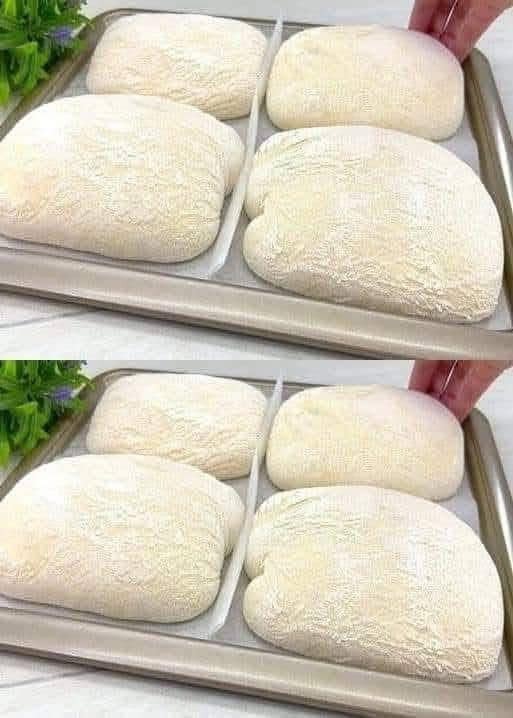Hello there!
An Italian staple, ciabatta bread is renowned for its open crumb and rustic, rustic texture. Ciabatta has quickly become a culinary mainstay because to its light chewy inside and crisp golden-brown exterior. Ciabatta is a beloved bread among bread lovers for its adaptability and great flavor. It is perfect for sandwiches, dips in olive oil, or just eaten warm from the oven.
**Where It Came From and Why It Matters Culturally**
In 1982, Italian baker Arnaldo Cavallari created ciabatta in reaction to the rising demand for French baguettes. Ciabatta means “slipper” in Italian, a nod to the bread’s flat sandal or slipper-like form. The light texture and crisp crust of ciabatta led to its rapid rise to fame, despite the bread’s relative youth in comparison to other Italian varieties. It has become an icon of contemporary Italian breadmaking and has found fans all around the globe.
When people think of the Mediterranean diet, they usually picture ciabatta—a dish made with wonderful bread and simple, fresh ingredients. It’s a staple in panini sandwiches, soup sides, and goes well with balsamic vinegar and extra-virgin olive oil.
**Quantity of Ingredients** ####500 grams, or about 4 cups, of all-purpose flour -**Lukewarm water, measuring 350 milliliters (or 1 and 1/4 cups)
Two tablespoons of olive oil – Seven grams of active dry or instant yeast (either 1 package or 2 ½ teaspoons) -Ten grams of salt, or around one and a half teaspoons, and one teaspoon of sugar, to aid in yeast activation, are needed.
**Optional Extras** – **Herbs:** For an extra burst of flavor, try mixing some fresh rosemary or thyme into the dough.
For a Mediterranean spin, try folding chopped green or black olives into the dough.
– **Garlic:** To add more fragrant depth, minced garlic may be included into the dough or sprinkled on top before baking.
By incorporating sun-dried tomatoes into the dough, a tangy and flavorful component is brought to the table.
**Cheese:** You may add grated Parmesan or Pecorino Romano to the dough or garnish it before baking.
Success Hints ####
1. **Work with a dough that is well hydrated:** A high water-to-flour ratio is the key to ciabatta’s airy, open crumb. The dough’s natural sticky texture is normal, so there’s no need to worry.
2. **Minimize Kneading:** Unlike other breads, ciabatta dough is usually not overly worked. Instead of kneading the dough vigorously, build its structure by folding and stretching it gradually.
3. **Allow for extended fermentation:** To get the greatest taste and texture, let the dough rise slowly, preferably in the fridge for a few hours or even overnight.
4. **Prep your baking surface:** Ciabatta is best baked on a pizza stone, baking sheet, or cast-iron skillet that has been heated to a high temperature in order to get the characteristically crunchy crust.
5. Keep the dough from being handled too much: Be careful not to deflate the dough by handling it too roughly while shaping. Do not force it or handle it too forcefully.
**Procedure** #### 1.Knead the Flour:
– Mix the sugar, salt, and flour in a big basin. Make a frothy mixture of yeast and lukewarm water in a separate dish or jug; set aside for 5 minutes. – Combine the flour, yeast, and olive oil. Mix everything together, then work in a couple of minutes of kneading time until dough forms.
2. **Initial Crypt:** – After you place the bowl under a moist towel or plastic wrap, let it aside in a warm place to rise for around one to two hours, or until it has doubled in size.
Continued on next page 👇(page 2)👇
